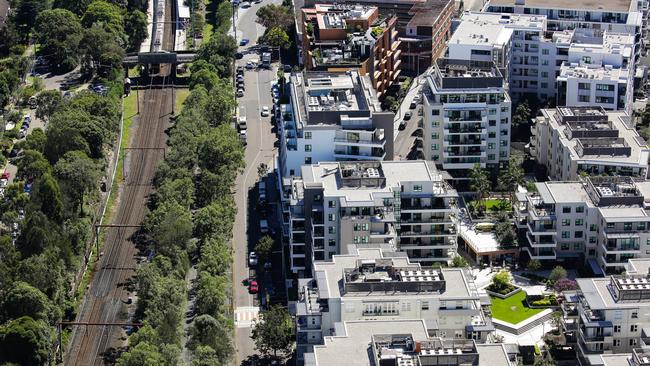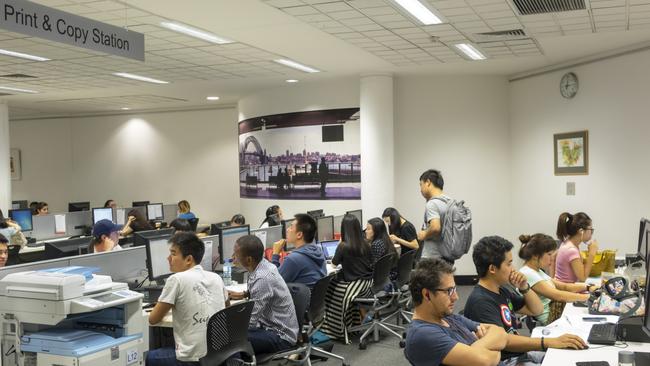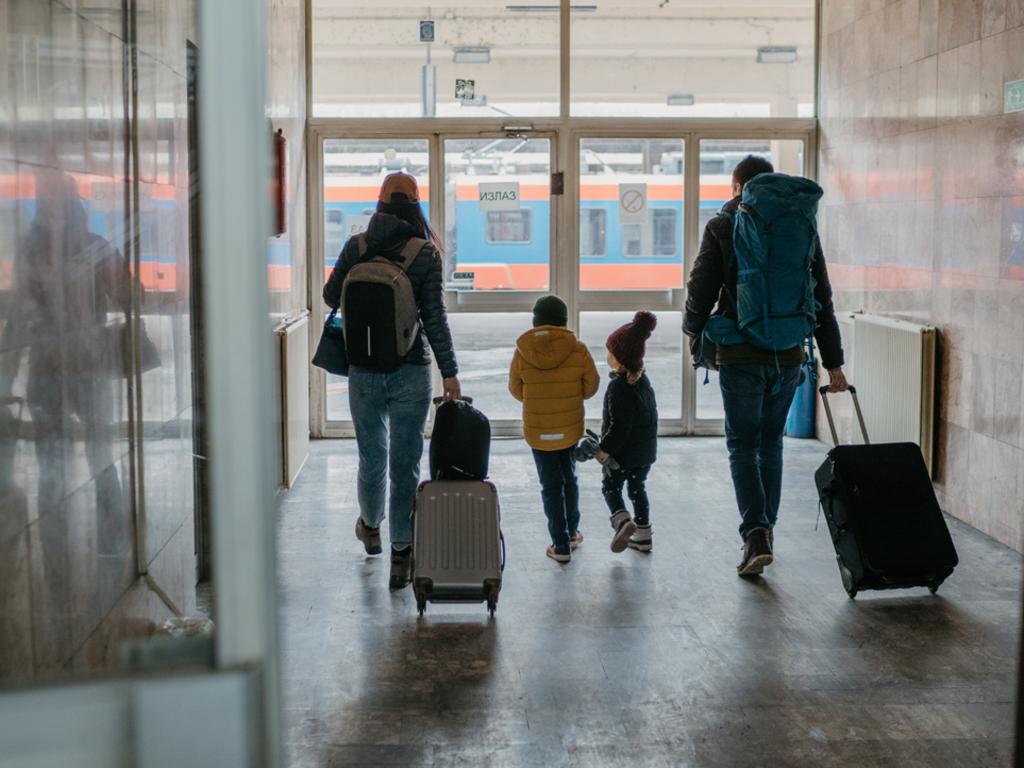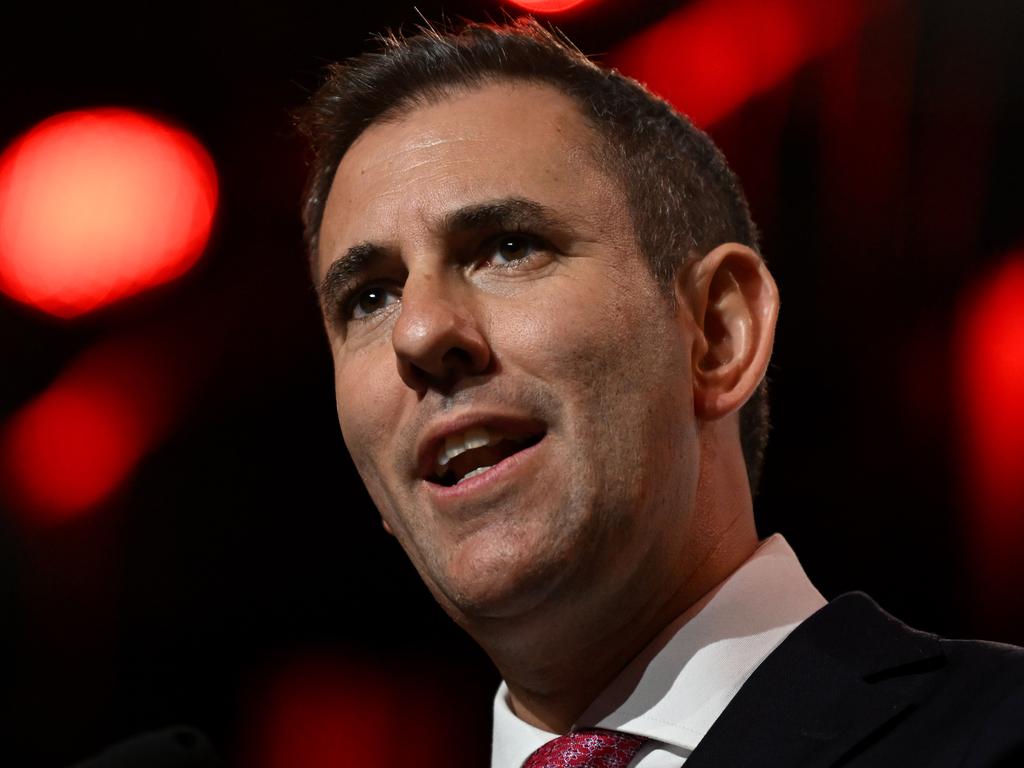Record post-pandemic population growth will test Australia’s social and economic capacity
Two million more foreigners are coming to settle on our shores over the rest of this decade and the strain is already showing.

This record inflow, peaking this year and next, will put renewed pressure on the social licence of a policy that has been Australia’s most transformative and successful experiment. Can we pull it off?
The rebound in international students and working holiday-makers was always expected after the border reopened, but the scale of the surge has taken Canberra’s officials by surprise. In the September quarter, the net inflow of migrants was a record 106,000, bringing the 12-month total to 304,000.
But wait, there are more, many more people on their way. Jim Chalmers says net overseas migration is likely to be at least 350,000 in the year to June; many observers believe that’s a conservative estimate given the number of arrivals to date.
For one, backpackers are extending their working holidays. Plus more Australians are staying put. The number of residents going through airport exit gates was down on trend by 50,000 in the year to September.
Across this financial year and next, Treasury expects net overseas migration to be 650,000, while the natural increase (births less deaths) is likely to be 250,000. By June next year our population will be almost 27 million.
Across the rest of the decade, Treasury projects migrant inflows at an average of the then record rates that prompted former prime minister Kevin Rudd to declare in October 2009: “I actually believe in a big Australia.”
Home Affairs Minister Clare O’Neil tells Inquirer “migration is central to Australia’s national story”. “The pandemic reminded us of this – our record workforce shortages today are partly driven by the loss of migrants we experienced during the past few years,” she says in an emailed response to questions.
“As migrants come back, we need to make sure that we get the skills we need, but with better planning across housing, infrastructure and services to make sure our migration system is effective on the ground.”

The population shock will push up rents, prop up consumer spending and take some of the pressure off businesses struggling to fill job vacancies in a full employment economy. Housing stress, as acute as it has ever been, will get worse given a shortage of construction workers.
“Without a clear policy on skilled migration for both the short and long term, it is extremely difficult for the home building industry to prepare and meet the demand for housing which is already at crushing highs,” the Housing Industry Association’s Jocelyn Martin said on Friday.
Almost a million more people across two years means a bigger economy but not necessarily higher living standards. The five-yearly performance review by the Productivity Commission, published a fortnight ago, found productivity growth was at a six-decade low.
Among a suite of 71 recommendations, it outlined a series of visa and policy changes to recalibrate migration to fill skill gaps, improve job matching and help bring new ideas to the workforce.
Productivity Commission chairman Michael Brennan argues skilled migration is neither infinite nor costless. During testimony to parliament a day ahead of the release of the mammoth report, Brennan said “the ability to tap skilled migration is a great asset for Australia”.
“It’s a great source of comparative advantage for Australia because we’re an attractive high-income country and English-speaking, which means we have access to a broad range of would-be skilled migrants with an attractive lifestyle proposition,” he told the house economics committee.
“In addition to that – though this is perhaps controversial in some quarters – we have a track record of absorbing higher population growth than most of the OECD, so we know how to absorb population growth in a way that I’m not sure all economies do. That gives us access to a world of skilled labour, which is a great asset.”
But he explained that there would be, at some point, costs associated with population growth. Brennan was alluding to congestion and pressure on social services, to name but a few. “They are borne by the Australian community,” Brennan said. “So you want to make sure that you’re rationing that resource carefully and not just, as it were, making skilled migration or migration outcomes available in an ad hoc way.”

The research director at the e61 Institute, Dan Andrews, tells Inquirer that during the past 15 years Australia relied heavily on immigration-fuelled population growth to drive growth in gross domestic product “instead of doing the hard yards on structural reform to lift productivity”.
Andrews is a former head of structural policy analysis at the OECD, and since returning to Australia to lead the new think tank’s policy engagement he has been looking under the bonnet to see how the growth engine is running. In a nutshell, poorly.
“Australia has a productivity problem and we’ve been using immigration to cover it up,” he says. “A bigger Australia brings many benefits but the boon to living standards gets depleted when productivity is left to stagnate.”
Andrews argues Treasury’s so-called “3P framework” that underpins our growth model has focused on population and participation, while the third P (productivity) has taken a back seat. In a groundbreaking new study tracking individual migrants and the firms they work in, Andrews and e61 colleagues found the productivity benefits of immigration declined during the 2010s.
First, migrants are increasingly working in lower productivity industries such as hospitality and administration, with the pre-pandemic boom in international students central to the change. Second, within industries migrants are working in less productive firms than local workers. Third, visa type matters, with targeted economic migrants delivering a higher dividend than low-yielding self-selecting students and backpackers. Our migration machine, channelling scarce workers to leading firms, has lost its mojo.
“In an uber-competitive global labour market, the challenge for migration policy is no longer just to get bums on seats but to get the right bums on the right seats,” Andrews and colleague Aaron Wong wrote in an online comment for this newspaper.
“The migration system has been left to run essentially on autopilot for decades. And with the status quo crimping the productivity benefits of migration, something needs to change.”
Critics allege the Albanese government has “hit the ground reviewing”, but in the case of migration it is warranted. Like many analysts in this policy sphere, Andrews argues our migration system is too complex.
“We currently advertise more than 70 different visas,” he says. “But more than 100 visas are in play once we count the visa types of incumbent migrants that do not provide a port for new entry. Firms using the visa system lament the increase in red tape. All of this justifies Clare O’Neil’s reformist zeal in the immigration space.”
The Home Affairs Minister has considered interim recommendations of the three-person expert panel headed by the nation’s former top public servant Martin Parkinson; their final report is due soon. A sore point is that the submissions to the review have not been published, although some bodies have released their own.

O’Neil says the government has already “started by fixing the broken plumbing”. The department brought in 600 staff to bring down the visa backlog; from almost one million people in the backlog when Labor came to office last May, it’s now below 600,000.
“We’ve done this all while processing more than five million visa applications since July last year,” O’Neil says. “Now that we’ve got the basics right, we can move forward with larger reforms. Soon we’ll share the findings of the migration review and the government’s plan for bigger reforms to address the broken system.”
The Coalition delivered the pre-pandemic population boom, a policy its rusted-on voters condemned as a Ponzi scheme.
Liberal standard bearer John Howard, the nation’s second-longest serving prime minister, was sometimes derided as “Little Johnny”. But on immigration he was Big John. With the megaphone he championed strong border protection, while tripling the net migrant inflow from 80,000 when he came to power in early 1996 to 240,000 when he lost office in late 2007.
Of course, these policy positions are not inconsistent. Genius.
Opposition immigration spokesman Dan Tehan welcomes migration and points to last year’s Australian Election Study. At last year’s poll, 65 per cent of voters told the long-running Australian National University election survey they thought immigrants were good for the economy.
“Yet they are wary of the negative impacts as well,” says Tehan, noting that only one-third of voters said migration should be increased. “If Labor is going to let large numbers of people into Australia they need to bring the community with them and they need a plan that deals with the negative externalities of immigration, and top of that list must be housing.”
Like O’Neil, Tehan wants a visa system run with integrity and carefully planned, with a focus on housing, schools, and medical and other services. Yet Tehan says “Labor is running a Big Australia with no plan and no transparency”.
“One of the first acts of the Albanese government last year was to add an additional 35,000 permanent migrants to our annual intake, but they haven’t said what skills these new arrivals will bring,” he says. “They will give 19,000 temporary protection visa holders permanent residency but haven’t said whether those people will be counted as part of our humanitarian intake or in addition to it.”

One of the bugbears of business in migration has been labour market testing, meaning an employer has to advertise a vacancy locally before they can hire a person on a temporary visa. Tehan says a leak suggests the migration review recommends abolishing labour market testing when recruiting highly skilled international workers.
“That recommendation is in direct conflict with Labor’s national platform that commits the government to renegotiating all of Australia’s existing free trade agreements to insert labour market testing requirements,” he says.
“Remain still and do nothing is good advice if you’re confronted by a grizzly bear but it’s a terrible way to run our immigration system when we’re dealing with skills shortages, a housing crisis and rampant cost-of-living pressures.”
The Productivity Commission says to improve the dividend from migration, the federal government should move away from relying solely on skilled occupation lists, which are often outdated, for temporary and permanent skilled migration. In their place, as others have argued, the government should introduce wage thresholds for employer-sponsored skilled migration (including age-contingent wage thresholds for sponsored permanent migration), removing list-based restrictions above those thresholds.
The commission also said we should abolish visas with a poor rationale and questionable benefits, such as the business innovation and investment permanent visa, which is failing to achieve its policy aim and has poor fiscal outcomes. As well, the government should eliminate unnecessary barriers that stop the immediate employment of newly arrived migrants by streamlining recognition of qualifications from abroad.
Data guru Andrews says “boosting productivity is not the only goal of our migration program”. “Permanent migration reunites families,” he says. “The working holiday-maker program allows young people to get a taste of Australia.
“International students constitute one of our largest exports. But we need to make it easier for the economic-focused parts of the migration program to attract the best migrants and channel them into our most dynamic firms.”
O’Neil says we have an “ageing population and poor productivity growth, all while being in a global war for talent”. “The former government loaded the system up with arcane rules and bureaucracy for highly skilled migrants but held wages down for migrants and locals in lower wage sectors,” she says. “To tackle these challenges, we need to build a better targeted and streamlined migration system to get the people with specialised skills we need while providing better protections for lower-wage migrants and locals.”
O’Neil represents Hotham in Melbourne’s vibrant southeastern suburbs, where 57 per cent of residents were born overseas; the national average is 33 per cent. The leading countries of birth other than Australia reported in the 2021 census for the area were India, Vietnam, China and Cambodia.
“I live, work in and represent one of the most culturally diverse parts of Australia,” O’Neil says in response to a question about her constituents’ views about the problems in the migration system and Melbourne’s capacity to cope with the return of high population growth.
“My neighbours tell me that they want more carers for their parents in aged care and more nurses in emergency departments – a better targeted migration system is not the full answer but it is the part answer to these concerns.
“But they want to make sure this happens with the right planning in housing, infrastructure and services – better aligning our migration system with these policy areas is a big focus for us.”
With the population locomotive at full speed, destination 30 million in a decade, there will be immense social, political and economic costs if we can’t get it right.






The Big Australia Express is back on track after the pandemic’s derailment of rapid population growth. An extra two million migrants are expected in what remains of this decade, as the nation quickly makes up for all those people who didn’t come here because of Covid-19.